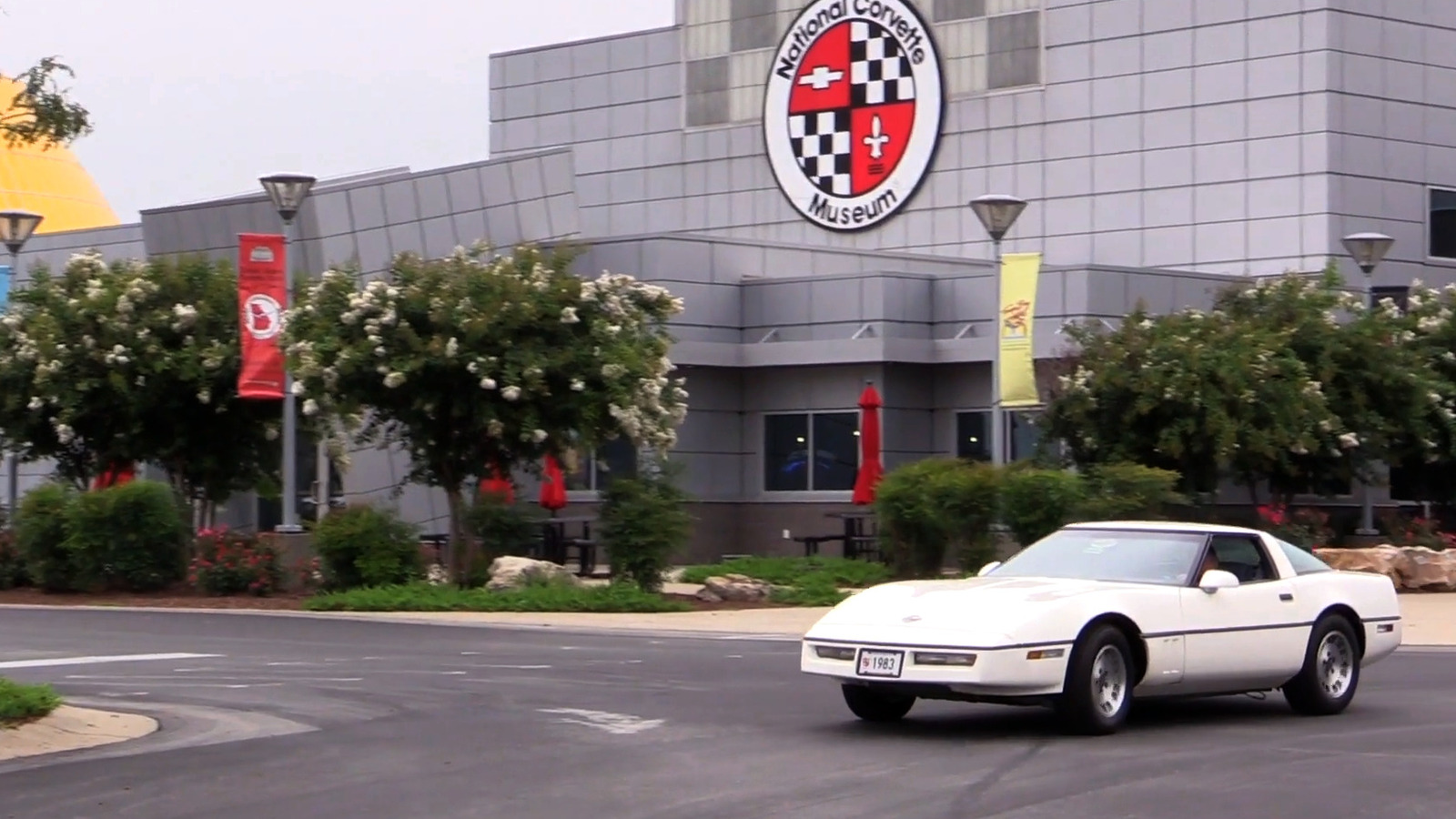
There’s no such thing as a 1983 Chevy Corvette. Never has been, never will be. Everybody knows that. If you’ve ever seen one, no you didn’t. If someone ever tried to sell you one, they were trying to scam you. If your uncle ever had one, he’s a liar. Now, technically, a handful of new C4 Corvettes were built in 1983 — 57 of them, to be precise — but they were never sold to the public. These cars were early prototypes, engineering bucks, crash test units, and media review cars, and they were all destroyed before the actual new C4 generation was released in 1984.
So, if there’s no such thing as a 1983 Corvette, what’s up with the white ’83 C4 at the National Corvette Museum in Bowling Green? Surely that’s a fake, right? If the story says that all the test cars were destroyed then the NCM couldn’t possibly have one. Did someone pull a fast one on the museum? Well, you know how there’s an exception to every rule? That’s the case here, because there is such a thing as a 1983 Corvette. It’s the only one of its kind in the world, and it only exists today due to a string of good luck and strange occurrences.
A new Vette struggles to be born
Things were looking pretty dire for the venerable Corvette by the dawn of the 1980s. The C3 discovette platform was on its last legs, its engine strangled by malaise-era emissions standards and its running gear a ’60s-era relic. By the late ’70s, the big brains in General Motors design were already working away on a new generation of Corvette, the C4. They knew they wanted it for 1983, but they had some very ambitious goals for the new car’s body, running gear, and technology. Unfortunately for GM, its eyes were a bit bigger than its stomach, as it were.
As C4 development progressed, numerous production issues reared their ugly heads. GM moved Corvette production in 1981 from its longtime home in St. Louis to an all-new facility in Bowling Green, KY. This was done in anticipation of building the C4s in the new factory, but it quickly got tangled up in issues producing the new composite body panels due to a last-minute change in their makeup. Other parts of the production and design process got delayed, schedules fell behind, and there was even some alleged c-suite meddling — apparently GM boss Lloyd Reuss wanted the C4 to have a targa top instead of t-tops, and brought this up at the last minute. It became clear to the Corvette boys that they were never going to make their ’83 deadline, so they punted.
While some of the C4’s advanced technology made it into the last year of the C3 — the new cross-fire fuel injection system, a new four-speed auto, and the one-piece glass liftback — General Motors decided that discretion was the better part of valor and decided in 1982 to delay the C4’s launch until 1984. The company would use this gap year to really dial the new car in and make sure it was as good as it could be when it was finally launched. You know what? It worked, and the C4 Corvette was a huge evolutionary leap forward for the Corvettes and cemented its future in GM’s lineup.
A lone survivor
So, what about this white car at the NCM that claims to be an ’83? Well, that car there is an actual, factual, 1983 Corvette, the only one of its kind. No one is quite sure how it survived when it and all its remaining siblings were ordered to the crusher. Some say it got lost, others say it was intentionally hidden. Whatever the case, the car apparently languished in a parking lot outside of the Bowling Green factory for two years until the plant manager discovered it in 1985. He ran the mystery car’s VIN — 1G1AY0783D5110023 — and it came back as an ’83. The ’83, in fact.
The car was immediately moved inside to protect it. A couple years exposed to the elements had done a real number on the car, so the guys at the factory spruced it up a little, slapped on a set of directional 16-inch C4 wheels, and gave it a snazzy stars and stripes-themed paint job. The world’s only ’83 Corvette became kind of a factory mascot and was set in a place of honor where it stayed for nearly a decade.
The star-spangled ’83 was donated to the National Corvette Museum in 1994 upon the museum’s grand opening. Museum staff undertook a thorough restoration returning the ’83 to its original white paint and blue interior. They even replaced the 16-inch wheels with 15-inch hoops that were originally designed for the bottom rung of the C4 lineup.
The world’s only 1983 Corvette is still on display at the National Corvette Museum where it’s been since 1994. Miraculously, it survived the 2014 sinkhole event and you can still see it occasionally puttering around the museum grounds.

